![]()
![]()
![]()
Use LEFT and RIGHT arrow keys to navigate between flashcards;
Use UP and DOWN arrow keys to flip the card;
H to show hint;
A reads text to speech;
53 Cards in this Set
- Front
- Back
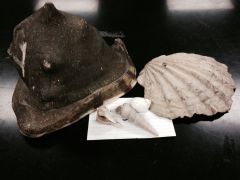
|
MOLLUSCA Gastropoda
Cambrian to Recent
Dextral- right handed Sinister- left handed |
|
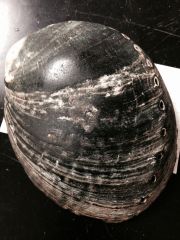
|
MOLLUSCA Gastropoda
Cambrian to Recent
can tell because it does not have the septa on the inside |
|
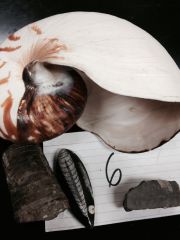
|
MOLLUSCA Cephalopoda Nautiloids
Cambrian to Recent |
|
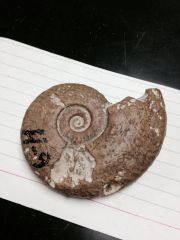
|
MOLLUSCA Cephalopoda Ammonoid
D (devonian) -K (cretaceous) |
|
|
Nautiloid Anatomy |

|
|
|
Nautiloid and ammoniods |
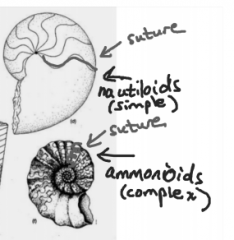
|
|
|
Difference between Ammonoids and Nautiloids |
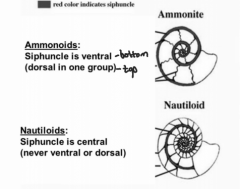
Siphulcle connects the chambers and allows the organism to change its buoyancy by moving fluid around chambers |
|
|
Ammoid Suture Pattern Goniatitic Ceratitic Ammonitis |
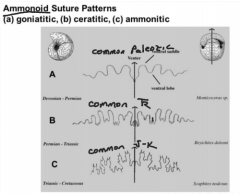
|
|
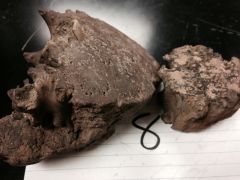
|
Piece of an ammonoid fossil that shows the complex folding of the septa mode of fossilization: cast |
|
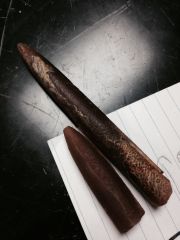
|
MOLLUSCA Cephalopoda Belemnites (squid like like coleoids)
C (carboniferous)-K (cretaceous)
Nektonic (swimmer) Predator |
|
|
Brachiopod vs Bivalve |
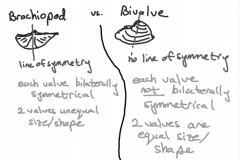
|
|
|
Bivavlia Anatomy |

|
|
|
Burrowing Bivalve Anatomy |
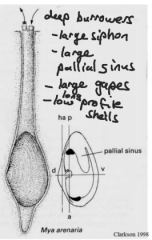
|
|
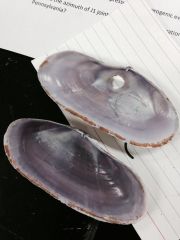
|
MOLLUSCA Bivalvia/ Pelecypoda
Cambrian- Recent |
|
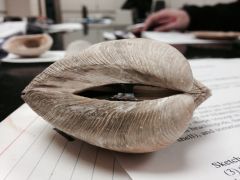
|
MOLLUSCA Bivalvia/ Pelecypoda Modern Bivalve
Cambrian to Recent |
|
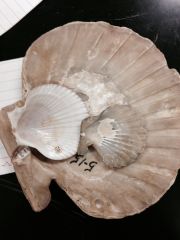
|
MOLLUSCA Bivalvia/ Pelecypoda (on list) Pecten (not on list)
Cambrian to Recent |
|
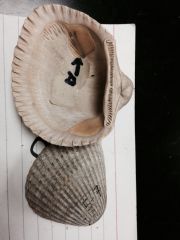
|
MOLLUSCA Bivalvia/ Pelecypoda Arca (not on list)
Cambrian to Recent |
|
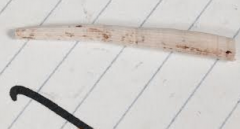
|
MOLLUSCA Scaphopoda (on list) Dentalium (not on list)
?O (ordovician) D (devonian)- Recent
Key Feature that allows you to identify: two openings, one on the top and one on the bottom |
|

|
Ammonite |
|
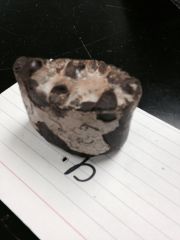
|
Baculite Ammonoid |
|
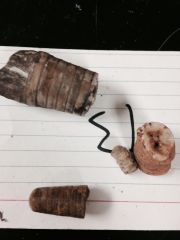
|
Some are segments of straight shelled cephalopods, and some are crinoid columnals. the cephalopods do not have spokes while the crinoid does. the crinoids dont taper while cephalopods do |
|
|
Anatomy List |
MOLLUSKS ANATOMY Mantle Siphonal notch/ canal dextral vs. sinister coiling siphuncle sutures septa adductor muscle scars pallial line pallial sinus siphon |
|
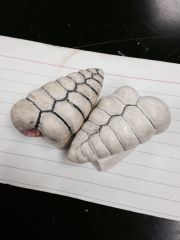
|
MICROFOSSIL Protista Foraminifera- Basic Test Structure
Cambrian to Recent |
|
|
Foram Anatomy |

|
|
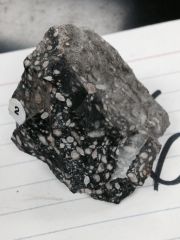
|
MICROFOSSIL Protista Foraminifera Fusulinids
C (carboniferous)- P (permian) |
|
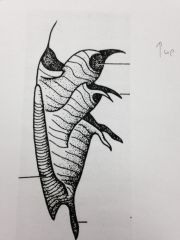
|
MICROFOSSIL Hemichordata Graptolites- General Structure
Cambrian - C (carboniferous) |
|
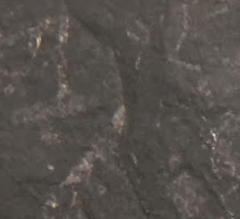
|
MICROFOSSIL Hemichordata Graptolites
Cambrian - C (carboniferous) |
|
|
Graptolites Anatomy |
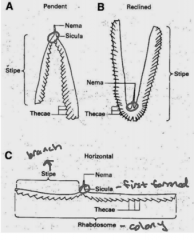
Graptolites Anatomy |
|
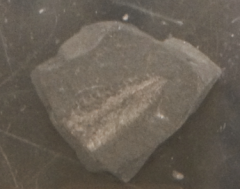
|
MICROFOSSIL Hemichordata Graptolites Phyllograptus (not on list)
Cabrian to Recent |
|
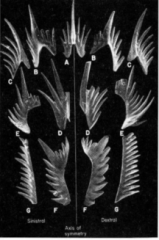
|
MICROFOSSIL Conodonts
Paleozoic and Triassic
Conodonts are most closely related to vertebrates |
|
|
Anatomy List |
MICROFOSSILS ANATOMY test aggluntinated rhabdosomes stipe theca |
|

|
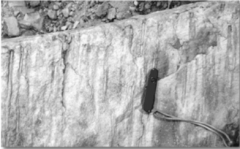
ICHNOFOSSILS Skolithos |
|
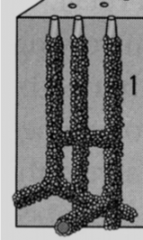
|
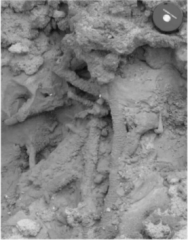
ICHNOFOSSILS Skolithos Ichnofacies (Sandy Shore) Ophiomorpha |
|
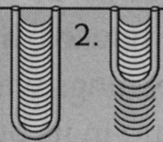
|
ICHNOFOSSILS Skolithos Ichnofacies (Sandy Shore) Diplocraterion |
|

|
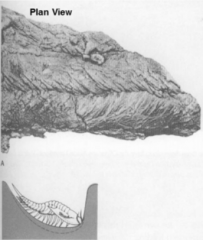
ICHNOFOSSILS Cruziana Ichnofacies (Shallow Shelf) Cruziana
Trilobites hypothesized to be responsible for creating |
|

|
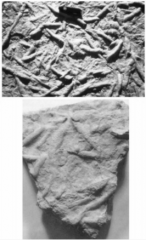
ICHNOFACIES Cruziana Ichnofacies (Shallow Shelf) Thalassinoides |
|

|
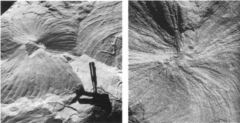
ICHNOFACIES Zoophycos Inchnofacies ("Slope") Zoophycos |
|
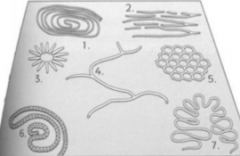
|

ICHNOFACIES Nereites Ichnofacies (Abyssal Zone) Nereites |
|
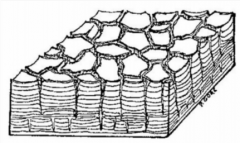
|
Sedimentary Structure Mud Cracks- Indicated that the environment was dired out or maybe experienced a drought |
|
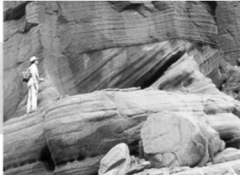
|
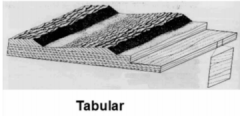
Sedimentary Structure Tabular Cross Bedding |
|

|
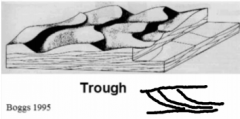
Sedimentary Structure Trough Cross Bedding |
|
|
Ripples |
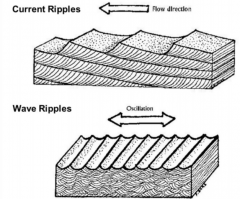
|
|
|
Climbing Ripples |
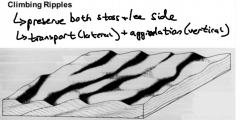
|
|
|
High Vs Low Aggredation |

|
|
|
Herringbone |
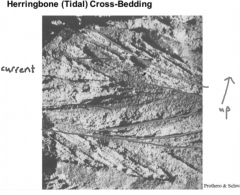
you know which way is up because the lines are tangential at the bottom and has sharp contact at the top. -Preserves the lee side |
|
|
Interference Ripples |
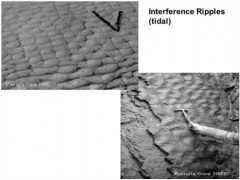
Sedimentary Structure- where you have active water flow one way for some time and then there is a change in that direction of flow (2 flow directions) |
|
|
Tidal Features |
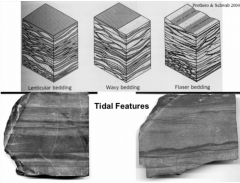
|
|
|
Graded Bedding |
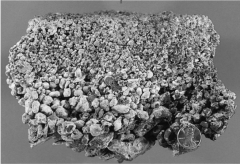
|
|
|
Rain drop impressions |
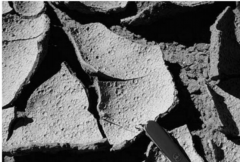
|
|
|
Sole Marks- Flute Casts and Took Marks |

Flute Casts- infil of structure that was on the surface Tool marks- things are drug accross top (drag, bounce, etc) scouring out and fill in/ form casts |
|
|
Load Casts |
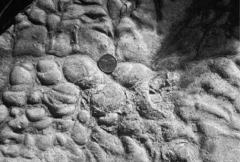
Upper material oozing down into still squishy stuff below
(top of the lower will have indentation) |
|
|
Ball and pillow structures |
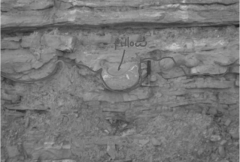
A little more organized load casts balls- when pillows get elongated and break off because they oozed down far enough) |
|
|
Flame Structures |

Mud squished up into overlying sand |

